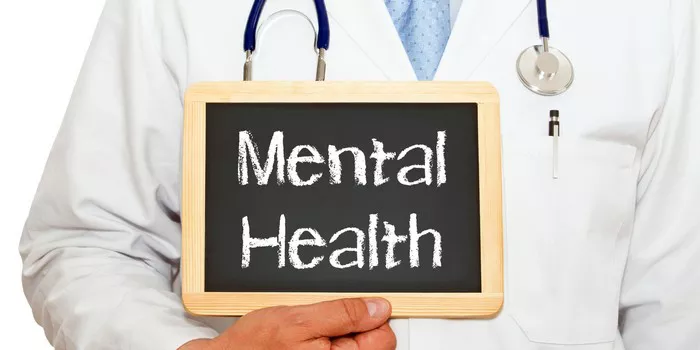Mental disorders significantly affect an individual’s ability to function in daily life, impacting their thoughts, emotions, and behaviors. They vary widely in symptoms and severity. This article provides a comprehensive overview of nine major mental disorders, shedding light on their characteristics, impacts, treatment options, and challenges in diagnosis.
Mental Disorders
Mental disorders, often referred to as psychiatric disorders or mental illnesses, are conditions that manifest in psychological symptoms that impact multiple areas of life. These disorders can disrupt an individual’s thoughts, feelings, mood, and behavior, severely affecting personal relationships, job responsibilities, and overall quality of life. Understanding these disorders is crucial for effective identification, empathy, and intervention.
1. Major Depressive Disorder (MDD)
Overview and Symptoms: Major Depressive Disorder is characterized by a persistent feeling of sadness or a lack of interest in outside stimuli. The key symptoms include pervasive low mood, significant weight loss or gain, insomnia or hypersomnia, fatigue, feelings of worthlessness, and recurrent thoughts of death.
Causes and Risk Factors: The etiology of MDD is multifactorial, including genetic predisposition, environmental stressors, and biochemical imbalances in the brain.
Treatment Options: Treatment typically involves a combination of antidepressant medication and psychotherapy. Cognitive Behavioral Therapy (CBT) and Interpersonal Therapy (IPT) are particularly effective.
Challenges in Diagnosis and Management: Diagnosing MDD requires careful evaluation as symptoms often overlap with other mental disorders. Treatment resistance and the risk of suicide pose significant challenges in management.
2. Bipolar Disorder
Overview and Symptoms: Bipolar Disorder is marked by extreme mood swings, which include emotional highs (mania or hypomania) and lows (depression). During manic phases, individuals may experience elevated mood, increased activity, sleeplessness, and sometimes uncontrolled behavior.
Causes and Risk Factors: While the exact cause is unknown, a combination of genetics, environment, and altered brain structure and chemistry may play roles.
Treatment Options: Treatment includes mood stabilizers like lithium, antipsychotic medications, and psychotherapy. Monitoring and managing medication side effects are crucial.
Challenges in Diagnosis and Management: The cyclical nature of mood swings makes bipolar disorder challenging to diagnose and treat, as symptoms can be mistaken for other disorders like ADHD or personality disorders.
3. Generalized Anxiety Disorder (GAD)
Overview and Symptoms: Generalized Anxiety Disorder is characterized by chronic, exaggerated worry and tension that is unfounded or much more severe than the normal anxiety most people experience. Symptoms include persistent worrying, muscle tension, restlessness, and irritability.
Causes and Risk Factors: GAD can be caused by a number of factors including genetic predisposition, personality, and life events.
Treatment Options: Treatment generally involves psychotherapy, medication, or a combination of the two. Cognitive-behavioral therapy is notably effective.
Challenges in Diagnosis and Management: Differentiating GAD from normal anxiety or other anxiety disorders is complex and requires detailed patient history and symptom assessment.
4. Schizophrenia
Overview and Symptoms: Schizophrenia is a serious mental disorder characterized by distorted thinking, perceptions, emotions, language, sense of self, and behavior. Common symptoms include hallucinations, delusions, disorganized thinking, and lack of motivation.
Causes and Risk Factors: Causes are thought to include genetics, brain chemistry, and brain structure.
Treatment Options: While there is no cure, treatment involves antipsychotic medications, psychotherapy, and community support.
Challenges in Diagnosis and Management: The symptoms can be highly disabling, and treatment is often lifelong and involves management of medication side effects.
5. Obsessive-Compulsive Disorder (OCD)
Overview and Symptoms: OCD is characterized by unreasonable thoughts and fears (obsessions) that lead to compulsive behaviors. Symptoms include frequent hand washing, counting, checking, or cleaning with significant impact on daily functioning.
Causes and Risk Factors: The cause of OCD is not fully understood but is believed to involve a combination of genetic, neurological, behavioral, cognitive, and environmental factors.
Treatment Options: Treatment often includes both medication and psychotherapy, with Exposure and Response Prevention (ERP) therapy being the most effective psychotherapeutic treatment.
Challenges in Diagnosis and Management: OCD symptoms can be confused with the habits and routines of daily life, making diagnosis difficult.
6. Post-Traumatic Stress Disorder (PTSD)
Overview and Symptoms: PTSD is triggered by a terrifying event, either experiencing it or witnessing it. Symptoms include flashbacks, nightmares, severe anxiety, and uncontrollable thoughts about the event.
Causes and Risk Factors: Directly linked to experiencing or witnessing traumatic events. Risk factors include a history of mental illness, lack of support after the event, and additional stress after the event.
Treatment Options: Psychotherapies like Cognitive Processing Therapy (CPT), Prolonged Exposure (PE), and medication are effective.
Challenges in Diagnosis and Management: Symptoms of PTSD may not appear immediately after the trauma, complicating diagnosis and treatment.
7. Panic Disorder
Overview and Symptoms: Panic disorder involves sudden and repeated attacks of fear that last for several minutes or longer. These are known as panic attacks and include symptoms like heart palpitations, chest pain, and feelings of impending doom.
Causes and Risk Factors: Genetics, major stress, or a predisposition to stress can contribute to the development of panic disorder.
Treatment Options: Treatment includes medications, psychotherapy, or a combination, with Cognitive Behavioral Therapy being particularly effective.
Challenges in Diagnosis and Management: Panic attacks are often mistaken for heart attacks, leading to misdiagnosis and inappropriate treatment.
8. Eating Disorders (Anorexia Nervosa, Bulimia Nervosa, Binge Eating Disorder)
Overview and Symptoms: Eating disorders are characterized by obsessive concerns with weight and disruptive eating patterns that negatively impact physical and mental health. Anorexia involves extreme food restriction leading to a significantly low body weight. Bulimia involves frequent episodes of binge eating followed by behaviors to prevent weight gain. Binge eating disorder involves regular overeating.
Causes and Risk Factors: Factors include genetic vulnerability, psychological issues, and cultural or social values.
Treatment Options: Treatment typically involves a combination of psychotherapy, medical care and monitoring, nutritional counseling, and sometimes medications.
Challenges in Diagnosis and Management: The secretive nature of eating behaviors associated with these disorders makes them hard to diagnose and treat.
9. Attention-Deficit/Hyperactivity Disorder (ADHD)
Overview and Symptoms: ADHD is marked by an ongoing pattern of inattention and/or hyperactivity-impulsivity that interferes with functioning or development. Symptoms include difficulty sustaining attention, hyperactivity, and impulsive behavior.
Causes and Risk Factors: ADHD is thought to be primarily genetic but can also be influenced by environmental factors and brain injuries.
Treatment Options: Treatments include medications, psychotherapy, education or training, or a combination of treatments.
Challenges in Diagnosis and Management: ADHD can be difficult to diagnose as it often coexists with other disorders, and symptoms can overlap with normal childhood behavior.
Conclusion
The landscape of mental health is complex and varied. Each of the nine disorders discussed here represents a significant challenge not only to those who live with them but also to clinicians and researchers. Understanding these disorders, recognizing their symptoms, and addressing their impacts through comprehensive treatment plans is essential for improving the lives of affected individuals and advancing mental health care.
[inline_related_posts title=”You Might Be Interested In” title_align=”left” style=”list” number=”6″ align=”none” ids=”7823,7854,7818″ by=”categories” orderby=”rand” order=”DESC” hide_thumb=”no” thumb_right=”no” views=”no” date=”yes” grid_columns=”2″ post_type=”” tax=””]
































